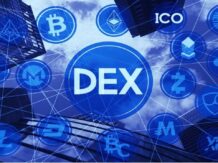Introduction
In the rapidly evolving landscape of blockchain technology, Solana has emerged as a trailblazer, offering a scalable and high-performance blockchain platform. Founded by Anatoly Yakovenko in 2020, Solana aims to overcome the scalability challenges that have hindered the broader adoption of decentralized applications (DApps) and blockchain technology. This article explores the fundamental aspects of Solana, its innovative features, and its impact on the decentralized ecosystem.
Solana’s Genesis
1. Introduction to Solana:
- Solana was introduced in 2020 with the goal of addressing scalability issues inherent in existing blockchain networks. It was designed to provide a fast, secure, and cost-effective platform for developers to build decentralized applications and blockchain solutions.
2. Proof-of-History (PoH):
- One of Solana’s key innovations is the integration of Proof-of-History (PoH), a unique timestamping mechanism. PoH enhances the ordering of transactions, significantly improving the overall efficiency of the network.
Key Features of Solana
1. Scalability:
- Solana is renowned for its impressive scalability, capable of handling a high throughput of transactions. The platform achieves this through a combination of innovative consensus mechanisms, parallel processing, and a fast confirmation time.
2. Proof-of-Stake (PoS) Consensus:
- Solana utilizes a Proof-of-Stake (PoS) consensus mechanism known as Proof-of-History (PoH). This not only enhances the efficiency of transaction ordering but also contributes to the network’s energy efficiency.
3. Parallel Processing:
- Solana employs a technique called parallel processing, allowing multiple transactions to be processed simultaneously. This parallelization significantly boosts the platform’s throughput, making it one of the fastest blockchain networks.
4. Low Transaction Fees:
- The efficient design of Solana’s blockchain, coupled with its high throughput, contributes to lower transaction fees. This makes Solana an attractive option for developers and users looking for cost-effective blockchain solutions.
5. Decentralized Applications (DApps):
- Solana has become a hub for decentralized applications across various sectors, including decentralized finance (DeFi), non-fungible tokens (NFTs), gaming, and more. Its scalability and low fees make it an appealing choice for developers seeking to deploy DApps.
Solana’s Impact on DeFi and NFTs
1. DeFi Ecosystem:
- Solana has witnessed substantial growth in its decentralized finance (DeFi) ecosystem. Projects such as Serum, Raydium, and Mango Markets have gained prominence, offering a range of financial services, including decentralized exchanges and liquidity pools.
2. NFT Marketplaces:
- Solana has also made significant strides in the non-fungible token (NFT) space. NFT marketplaces like Solible and Solanart have gained traction, providing a platform for artists and collectors to create, buy, and sell digital assets.
Challenges and Future Developments
1. Network Outages and Centralization Concerns:
- Solana experienced network outages in 2021, raising concerns about centralization. The Solana Foundation has been actively working on addressing these issues and enhancing the platform’s overall resilience.
2. Continued Development and Adoption:
- Solana’s future hinges on its ability to sustain its current level of development and adoption. As the platform continues to attract developers and users, ongoing improvements, community support, and strategic partnerships will play a crucial role in its success.
Conclusion
Solana has carved a niche for itself in the competitive blockchain space by addressing the scalability challenges that have plagued many decentralized networks. Its commitment to high throughput, low fees, and a developer-friendly environment has positioned Solana as a key player in the decentralized ecosystem. As the platform evolves and navigates challenges, Solana’s impact on decentralized applications, decentralized finance, and the broader blockchain landscape remains significant, showcasing the potential for scalable and efficient blockchain solutions.
You can buy Solana (SOL) on various cryptocurrency exchanges. Please note that the availability of Solana on exchanges may change, and new exchanges may have added support for SOL. Here are some popular exchanges where you could buy Solana:
- Binance:
- Binance: Binance is one of the largest cryptocurrency exchanges globally and often lists a variety of digital assets, including Solana.
- Coinbase:
- Coinbase: Coinbase is a user-friendly platform that allows you to buy, sell, and trade a selection of cryptocurrencies. SOL may be listed on Coinbase or Coinbase Pro.
- Kraken:
- Kraken: Kraken is a well-established exchange that provides a range of cryptocurrencies for trading.
- Huobi:
- Huobi: Huobi is a global cryptocurrency exchange that offers a variety of digital assets, and SOL may be available for trading.
- Gate.io:
- Gate.io: Gate.io is another exchange that might have Solana listed. It offers a range of cryptocurrencies for trading.
- FTX:
- FTX: FTX is a cryptocurrency exchange known for its innovative trading products. Solana is likely to be available for trading on FTX.
- KuCoin:
- KuCoin: KuCoin is a global cryptocurrency exchange with a variety of listed assets, and SOL may be one of them.
- Bittrex:
- Bittrex: Bittrex is a U.S.-based exchange that offers a selection of cryptocurrencies for trading.
- OKEx:
- OKEx: OKEx is a global cryptocurrency exchange that provides a range of digital assets, and SOL may be listed for trading.
- Crypto.com:
- Crypto.com: Crypto.com is a platform that offers various cryptocurrency services, including trading. SOL might be available on this platform.
Please note that before using any exchange, it’s important to conduct your own research, check the current availability of Solana on the platform, and consider factors such as fees, security features, and user reviews. Additionally, ensure that the exchange you choose is accessible based on your geographical location and complies with relevant regulations.





